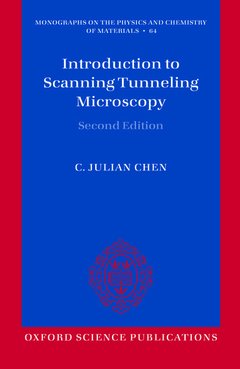Description
Introduction to Scanning Tunneling Microscopy (2nd Ed.)
Monographs on the Physics and Chemistry of Materials Series, Vol. 64
Author: Chen C. Julian
Language: English
Subjects for Introduction to Scanning Tunneling Microscopy:
Publication date: 12-2015
488 p. · 15.8x23 cm · Paperback
488 p. · 15.8x23 cm · Paperback
Description
/li>Biography
/li>
The scanning tunneling microscope and the atomic force microscope, both capable of imaging and manipulating individual atoms, were crowned with the Nobel Prize in Physics in 1986, and are the cornerstones of nanotechnology today. The first edition of this book has nurtured numerous beginners and experts since 1993. The second edition is a thoroughly updated version of this 'bible' in the field. The second edition includes a number of new developments in the field. Non-contact atomic-force microscopy has demonstrated true atomic resolution. It enables direct observation and mapping of individual chemical bonds. A new chapter about the underlying physics, atomic forces, is added. The chapter on atomic force microscopy is substantially expanded. Spin-polarized STM has enabled the observation of local magnetic phenomena down to atomic scale. A pedagogical presentation of the basic concepts is included. Inelastic scanning tunneling microscopy has shown the capability of studying vibrational modes of individual molecules. The underlying theory and new instrumentation are added. For biological research, to increase the speed of scanning to observe life phenomena in real time is a key. Advances in this direction are presented as well. The capability of STM to manipulate individual atoms is one of the cornerstones of nanotechnology. The theoretical basis and in particular the relation between tunneling and interaction energy are thoroughly presented, together with experimental facts.
C. Julian Chen, Department of Applied Physics and Applied Mathematics, Columbia University, New York, USA.
© 2024 LAVOISIER S.A.S.




